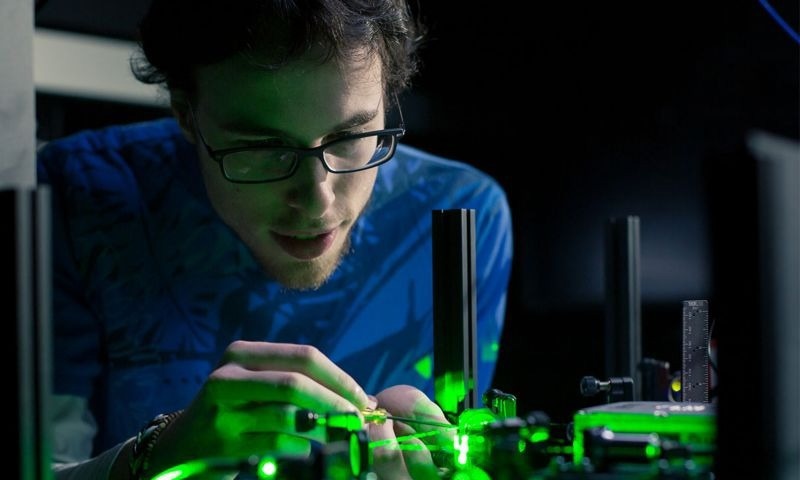A diamond sensor powered by a laser that was devised by an international research team can measure magnetic fields up to ten times more precisely than current methods. Science Advances has published the teams' findings.
 Dr. Marco Capelli, one of the co-researchers, in the ARC Centre of Excellence for Nanoscale BioPhotonics laboratories at RMIT University. Image Credit: RMIT University
Dr. Marco Capelli, one of the co-researchers, in the ARC Centre of Excellence for Nanoscale BioPhotonics laboratories at RMIT University. Image Credit: RMIT University
Their innovation could help enhance existing magnetic-field sensing techniques for mapping brain activity to identify brain disorders. The team claims that in five years they could create a proof-of-concept device with their unique sensor given adequate financing and industry involvement.
The subject of concussions in sports has gained attention recently as well-known players have opened up about the serious consequences of head injuries that they have suffered throughout their careers. Nearly 500,000 Australians suffer from dementia, and roughly 250,000 Australians suffer from epilepsy.
Beyond healthcare, a variety of industries, including mining, might benefit from the research, which could result in enhanced applications for mineral exploration.
One of the finest applied research organizations in Europe, the Fraunhofer Institute for Applied Solid State Physics (IAF) in Germany, led the project while Professor Andrew Greentree, Professor Brant Gibson, and Dr. Marco Capelli of RMIT were involved as specialists in diamond sensing technology.
What’s the Scientific Breakthrough?
Diamond is already used to detect magnetic fields, and the intensity of the magnetic field affects how much light is emitted by quantum defects in the diamond.
The issue with the current method is that the majority of that light is lost.
Our breakthrough was to make a laser from the defects. By collecting all the light—instead of just a small amount of it—we can detect the magnetic field 10 times more precisely with our sensor compared with current best practice.
Andrew Greentree, Professor, Theoretical Physics. RMIT University
How Would the Portable Brain Imaging Device Work?
Modern magnetoencephalography, or MEG, technology is extremely sensitive but also big, expensive to install, and it requires liquid helium to work at extremely low temperatures when patients are motionless.
Greentree added, “Current MEG machines are huge devices, with dedicated facilities, and they require magnetic shielding around them as well.”
When compared to current devices, MEG technology based on the new diamond-laser sensor would be significantly smaller, function at room temperature, and be able to be attached to patients who can walk around.
“We really want to have something that we can place on a patient’s head and we want them to be able to move around—and there would be no need for expensive liquid helium to operate such a device. With Alzheimer’s, you want to be able to monitor the progression of the disease and know the effect of any treatments. It is similar with concussion, you want to be able to measure what is happening in the brain after each knock,” stated Greentree.
He further added, “With this MEG technology we envisage, you might be able to pick up early-onset dementia. With epilepsy, you could find out where it is occurring, and that would help you to better target interventions.”
The National Institutes for Quantum and Radiological Science and Technology in Japan and The College of Staten Island in the U.S. were also included in this study, which had Dr. Jan Jeske and Dr. Felix Hahl from Fraunhofer as corresponding authors.
Journal Reference:
Hahl, F. A., et al. (2022) Magnetic-field-dependent stimulated emission from nitrogen-vacancy centers in diamond. Science Advances doi:10.1126/sciadv.abn7192.